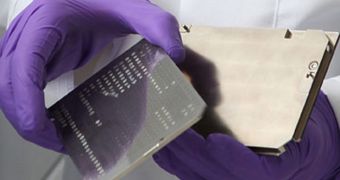A group of engineering researchers at the Rensselaer Polytechnic Institute (RPI) announces the creation of a new investigation method aimed at gathering vast amounts of biochemical data from nanoscale bone samples. The innovation has numerous potential applications.
Its main use will be in the fight against osteoporosis, a condition that mostly affects post-menopausal women, and whose primary symptom is bone frailty. The disease is responsible for rendering women's bones extremely brittle, and prone to fractures.
With the novel study, experts will have access to an entirely new proteomics-based approach to analyzing bone quality in at-risk women. By using this method, healthcare providers may become better-equipped to deal with the disease.
Additional applications are possible in the fields of archeology and forensic medicine, the RPI group believes. Studying human skeletons will become a lot easier, especially in cases where authorities do not have too much biological material to go on.
Details of the new research were already published online, in a recent issue of the journal Molecular & Cellular Proteomics. The paper was entitled “Biochemical Characterization of Major Bone-Matrix Proteins Using Nanoscale-Size Bone Samples and Proteomics Methodology.”
The study was carried out at the RPI Center for Biotechnology and Interdisciplinary Studies, and was funded primarily by the US National Institutes of Health (NIH). The actual investigation was led by expert Deepak Vashishth.
“We’re able to take very small, nanoscale-sized bone samples, and determine the protein signatures of the bone,” says the scientist, who is the head of the RPI Department of Biomedical Engineering.
“This is a relatively quick, easy way for us to determine the history of the bone – how and when it formed – as well as the quality of the bone, and its likelihood to fracture,” the expert goes on to say.
The team goes about analyzing bone matrix by combining laser-capture microscopy with a number of other investigations techniques. This gives them an unique insight into aspects such age, nutrition, and disease, alongside many others.
“I think [the new research] opens up a new avenue for approaching and studying osteoporosis,” the team leader concludes.

 14 DAY TRIAL //
14 DAY TRIAL //